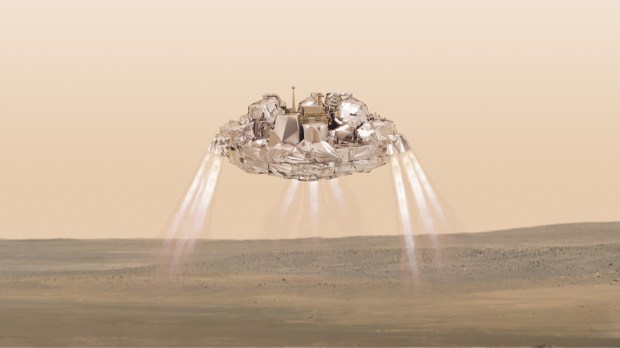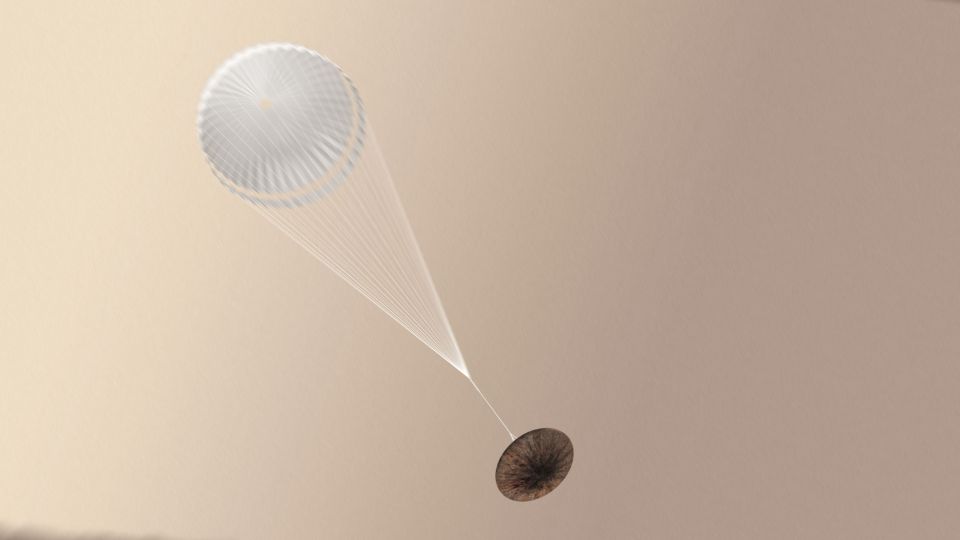ExoMars Schiaparelli spaceship lands on Mars – but has it survived ‘hell journey’?
European Space Agency awaits confirmation of successful touchdown

THE European Space Agency has landed a spacecraft on Mars as part of a mission to discover whether the Red Planet was ever home to LIFE.
However, it's fate has not yet been confirmed and mission control is currently analysing data to see if it arrived safely.
The robotic craft faced a difficult ride and landed on Mars right in the middle of dust storm season.
The probe was designed to have its "all well" signal relayed by an orbiting spacecraft, Mars Express. In this case the signal would not be received on Earth until some time after the landing, due to have taken place at 3.48pm, UK time.
As a short-cut scientists tried to listen in to Schiaparelli directly using a powerful Earth-based tracking station.
However, even though an earlier faint transmission from the lander was received just before its descent, no signal confirming the landing was forthcoming.
Open University space scientist Dr Manish Patel, who is closely involved in the mission, said from the European Space Agency (Esa) operations centre in Darmstadt, Germany: "It's not good, but it was always an experimental approach, largely untested, so we can't really do too much interpreting about what's happened.
"We have to step back and look at things as a whole.
"It's a case of waiting - but perhaps more nervously than before."
Related Stories
At 3.42pm, UK time, it was due to begin a "six minutes of terror" journey through the Martian atmosphere. During this time the probe was travelling on autopilot and mission controllers on Earth could only sit and wait - hence the "terror".
Although it carries some instruments, Schiaparelli's main job is to test out the Russian-designed landing system for a future ExoMars rover mission due to be launched in 2020.
Initially slowed by the friction on its heat shield, the probe should have deployed its parachute at an altitude of about 11km (6.8 miles).
As it neared the ground, three clusters of retro rockets were supposed to fire, slowing the craft's speed to less than 7km/h (4.3mph) two metres (6.5ft) from the surface.
The rockets were then due to switch off, allowing the probe to drop the rest of the way.
A special crushable structure built into the spacecraft was meant to cushion against the final shock.
During the descent Schiaparelli was programmed to take pictures of the approaching Martian terrain.
The landing site is Meridiani Planum, a flat region that interests scientists because it contains an ancient layer of haematite. On Earth, the iron oxide mineral almost always forms in a watery environment.
Schiaparelli was due to spend about four days gathering weather data before its batteries ran out.
While the drama of the landing was taking place, TGO successfully settled itself in orbit around Mars with a 139-minute main engine burn.
Starting next year, the orbiter will sniff the Martian atmosphere for traces of methane and help scientists decide if it has a geological or biological origin. On Earth, methane is chiefly produced by billions of bacterial organisms, many of which live in the guts of animals such as cows.
We pay for your stories! Do you have a story for The Sun Online news team? Email us at [email protected] or call 0207 782 4368







